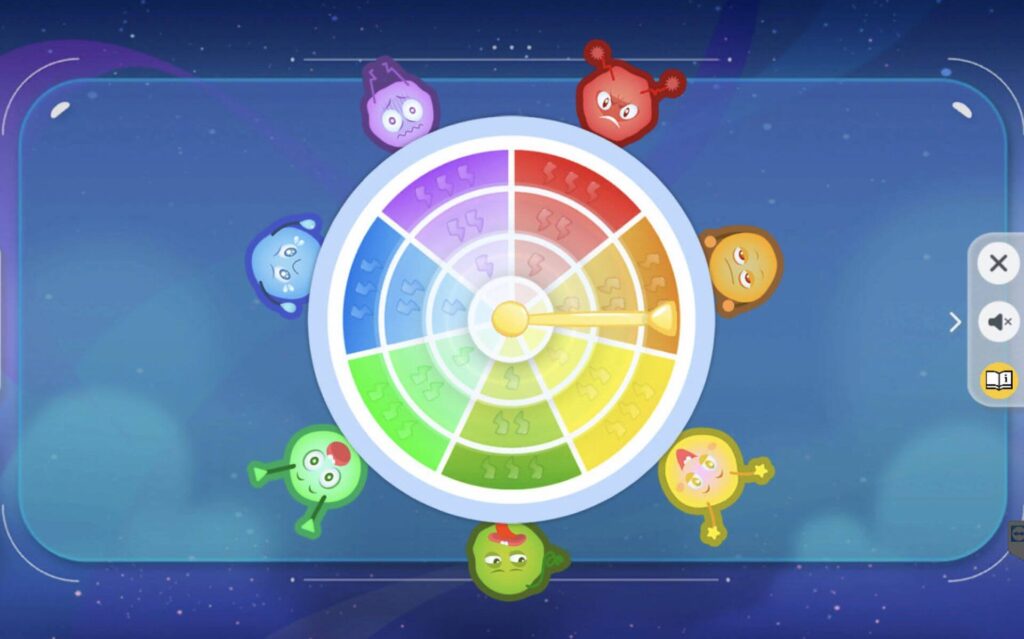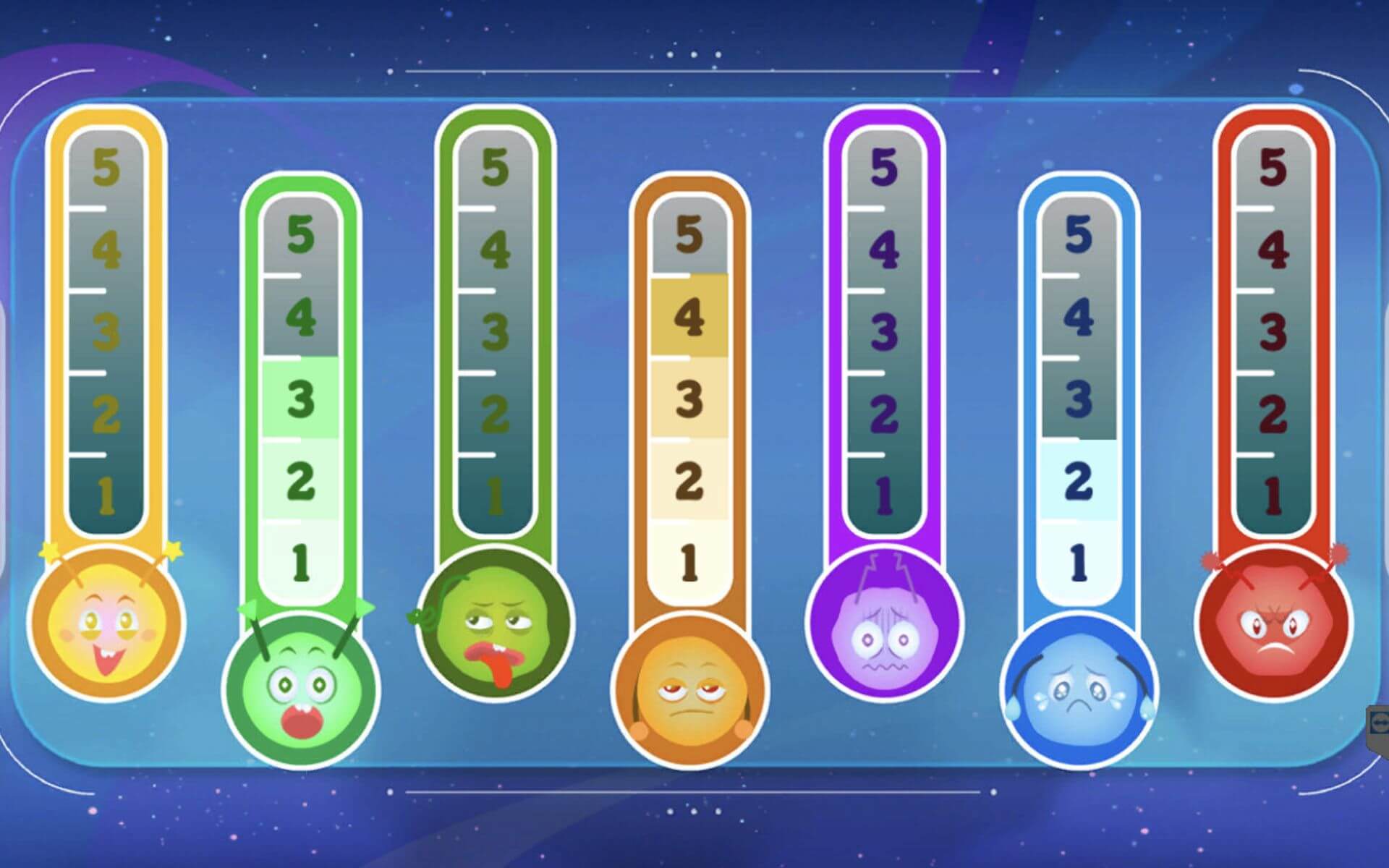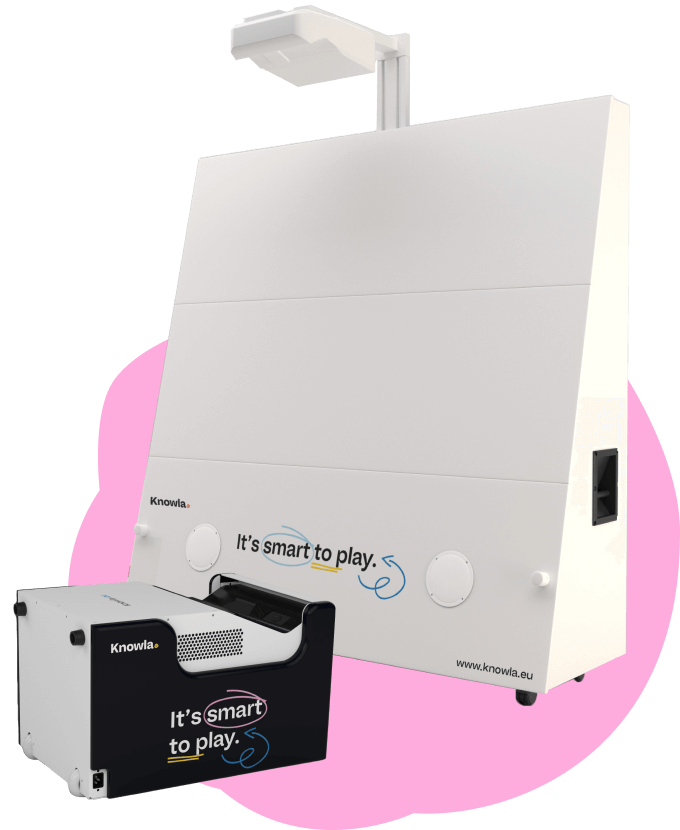The Wheel of Emotions and Emotions Thermometer activities from Planet Emo, enable children not only to identify and communicate their emotions, but also to learn about their variability and impact on daily interactions. Through interactive play, students learn the importance of talking openly about their feelings and how they can develop empathy and better relationships with others. In this article you will find specific ideas for using Knowl’s activities and learn about the benefits of ’emo-education’.
Wheel of Feelings and Feelings Thermometer at Planet Emo
On the Knowla device, select Planet Emo and find the Wheel of Feelings or Feelings Thermometer activity.
The two activities feature seven different emotions: joy, sadness, anger, fear, surprise, disgust and boredom, which were selected based on Kaitlin Robbs’ wheel of emotions.

To begin with, encourage students to be open and to share their emotions in a natural way. Children entering the classroom mark the appropriate box on the wheel or thermometers and share their current feelings. Explain that each emotion is necessary and should not be shamed.
How do the Feelings Thermometer and the Feelings Wheel work? In both activities, you can choose any emotion and its intensity. Press on the appropriate field and the thermometer will fill up to the appropriate level or the arrow will move to the indicated place of the circle.
The activities also have several additional features. In the side panel, you can set whether you want the view to be in color or black and white, and whether you want digits to appear on the thermometers to indicate the intensity. You can only mark one emotion on the wheel, while emotions can be marked independently on the thermometers.
Let’s talk about emotions
If, after marking a particular emotion, the child feels like it, he can tell the reason for his feeling. Encourage them to talk more deeply by asking additional questions. Offer help or advice.
The classroom should be a safe haven for students. No one should be forced to explain further, and children’s decisions should be respected.
Emotions change throughout the day
As part of an art class, students can make their own sentiment wheel out of paper. The child cuts out a circle and an arrow and draws a scale for the emotion.
Pin the whole thing together with a pin and a cork or rubber band on the other side. Over the course of the day, students will change the position of the cue and monitor how, when and why their mood changes.
At the end of the day, a debriefing can be prepared in which students tell about their observations. Everything should proceed taking into account their children’s willingness to talk. It is worth considering what positively and what negatively affects a particular person’s mood during the day, and how these emotions can be used, prevented or discharged.
Emo-games are needed
Every emotion is important and informs some need. Emo-fun makes it easier to express them.
Emo-fun has many advantages:
- Helps increase freedom to talk about feelings and self-observation;
- develops interpersonal relations;
- develops cognitive empathy;
- allows you to build closer relationships with other people;
- gives young people the courage to ask for help;
- Forms recognition of emotions in others;
- Strengthens the development of empathy.


